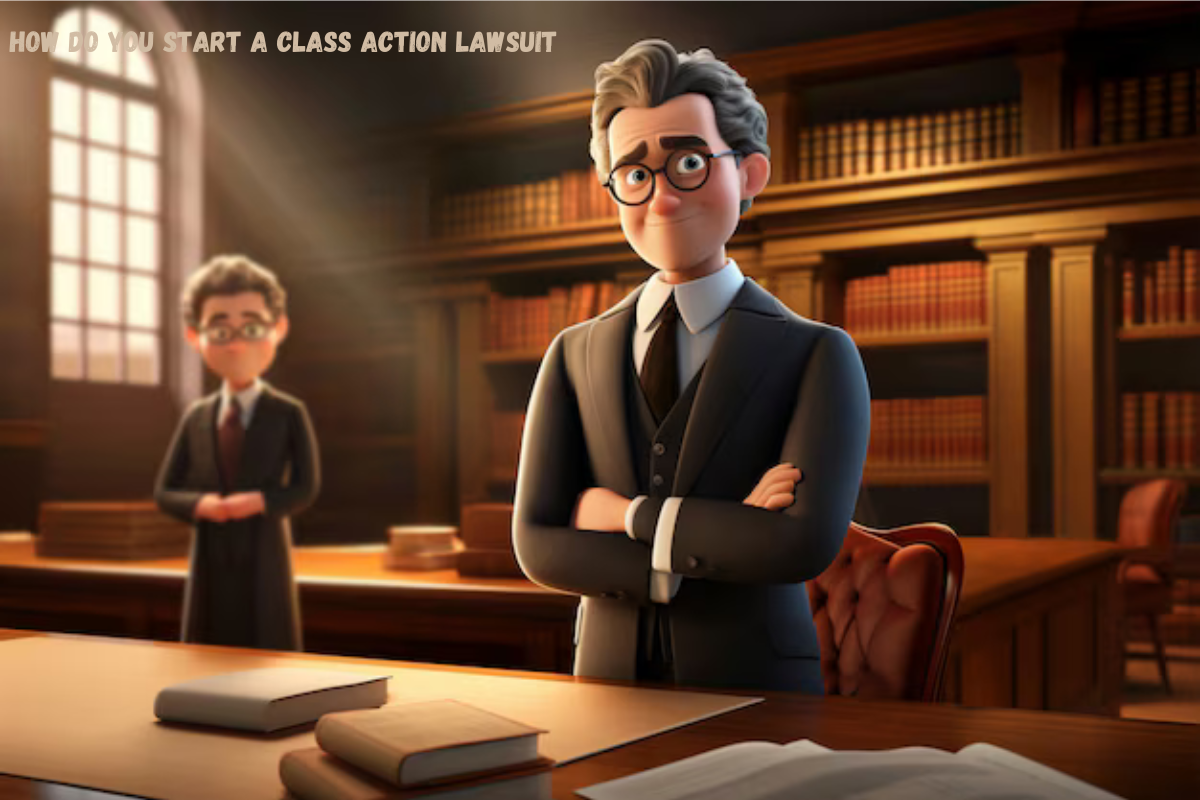Introduction to Class Action Lawsuits
A class action lawsuit is a legal case where one person or a small group of people sues on behalf of a larger group. This larger group, called the class, has similar issues or complaints. For example, if a company harms many people in the same way, a class action allows one person to start the case for everyone.
Why Are Class Action Lawsuits Important?
Class action lawsuits are important because they help people get justice when they cannot do it alone. They make it easier to handle cases where many people are affected. They also make it cost-effective for individuals because they share legal fees and resources. This way, even if each person’s claim is small, they can still get a fair chance in court.
Eligibility for a Class Action Lawsuit
Criteria for Class Action Lawsuits
To be eligible for a class action lawsuit, several criteria must be met. First, there must be a large group of people with similar claims or problems. Second, these claims or problems must come from the same cause, such as a company’s harmful product or practice. Third, the claims must be typical of the group, meaning the issues are similar across all members. Finally, the person starting the lawsuit, called the lead plaintiff, must be able to represent the interests of the entire group effectively.
Types of Cases Suited for Class Actions
Class action lawsuits are suited for cases where many people are affected in the same way. Common types include:
- Consumer fraud, where many people are misled by a company.
- Product liability, where a defective product harms a large group.
- Employment disputes, where workers face similar unfair practices.
- Environmental harm, where a large group suffers from pollution or other environmental damage.
Steps to Start a Class Action Lawsuit
Step 1: Identify Common Issues
The first step is to identify common issues among the people affected. Look for a shared problem or harm that impacts everyone in a similar way. This could be a faulty product, unfair treatment, or any other widespread issue.
Step 2: Gather Evidence
Next, gather evidence related to the common issue. Collect documents, records, or any proof that shows the problem exists and affects many people. This evidence will help build the case and show that it meets the criteria for a class action lawsuit.
Step 3: Find a Qualified Attorney
Finding a qualified attorney is crucial. Look for a lawyer who has experience with class action lawsuits. They can provide advice, help with legal procedures, and represent the group effectively in court.
Step 4: File a Complaint
The next step is to file a complaint in court. This document outlines the issue, the people affected, and the legal basis for the lawsuit. The court needs this to start the legal process and address the claims.
Step 5: Certification of the Class
Finally, the certification of the class is needed. The court must approve that the case qualifies as a class action. This means confirming that the group meets all the requirements and that the case can proceed with the entire class involved.
Finding a Class Action Attorney
How to Choose a Class Action Lawyer
Choosing the right class action lawyer is key to a successful case. Look for an attorney with experience in class action lawsuits. Check their track record and see if they have handled similar cases. A good lawyer should be knowledgeable about the legal process and have a history of successful outcomes. Consider their reputation, and make sure they are someone you feel comfortable working with.
Questions to Ask Potential Attorneys
When meeting with potential attorneys, ask these questions:
- Have you handled class action lawsuits before? This shows their experience with similar cases.
- What is your approach to handling class actions? Understand their strategy and how they plan to manage your case.
- What are the potential costs and fees? Clarify how they charge for their services and any other expenses.
- How will you keep me informed? Ensure they will communicate with you regularly about the case’s progress.
Costs and Funding for Class Action Lawsuits
Understanding Legal Fees
Legal fees for a class action lawsuit can vary. These fees cover the cost of hiring an attorney and other legal expenses. Understanding how these fees work is important for planning your case. Often, costs include filing fees, court costs, and charges for gathering evidence. Make sure you know what is included in the fees and what you might need to pay for separately.
Contingency Fees vs. Hourly Rates
Contingency fees and hourly rates are two common ways attorneys charge.
- Contingency Fees: With a contingency fee, the attorney only gets paid if you win the case. They take a percentage of the settlement or judgment. This can be a good option if you cannot afford upfront costs.
- Hourly Rates: An hourly rate means you pay the attorney for the time they spend on your case. This can be more predictable but may require paying out-of-pocket costs as the case progresses.
Choosing between these options depends on your financial situation and how you want to handle legal costs. Make sure to discuss and understand the payment structure before hiring a lawyer.
The Class Action Certification Process
What is Class Certification?
Class certification is the process where a court approves a case to proceed as a class action lawsuit. It means the court agrees that the case meets the criteria to be handled as a class action. This includes confirming that there are enough people with similar issues and that the lead plaintiff can represent the group effectively.
How is Class Certification Decided?
Class certification is decided based on several factors:
- Commonality: The court checks if the issues affecting the group are common and similar.
- Typicality: The claims of the lead plaintiff should be typical of the group’s claims.
- Adequacy: The court ensures the lead plaintiff and their attorney can represent the class fairly and adequately.
- Numerosity: There must be a large enough group of people affected to justify a class action.
The court reviews evidence and arguments from both sides to decide if the case qualifies for certification. If approved, the lawsuit can proceed with the entire class involved.
What Happens After Certification?
How the Lawsuit Proceeds
Once class certification is granted, the lawsuit moves forward. The case will go through various stages, including discovery, where both sides exchange information and evidence. The class members may also be notified about the case and their rights. The lawsuit will then proceed to the next steps, which could include settlement discussions or preparing for trial.
Settlement vs. Trial
- Settlement: Many class action lawsuits are resolved through a settlement. This means the parties agree on compensation or other terms without going to trial. Settlements can save time and money and provide quicker relief to the class members.
- Trial: If a settlement cannot be reached, the case goes to trial. At trial, both sides present their arguments and evidence to a judge or jury. The court will then make a decision. Trials can be lengthy and complex but are necessary if a fair settlement cannot be agreed upon.
Potential Outcomes of a Class Action Lawsuit
Types of Settlements
Class action lawsuits can end in different types of settlements:
- Monetary Settlement: The company or defendant pays a sum of money to the class members. This can be divided based on the harm each member suffered.
- Injunctive Relief: The defendant agrees to make changes to their practices or policies. This type of settlement can prevent future harm and is often used in cases of unfair business practices.
- Product Recall or Modification: In cases involving defective products, the defendant may agree to recall the product or fix the issues.
Possible Compensation for Class Members
Class members may receive various forms of compensation:
- Cash Payments: Class members receive a direct cash payment based on the settlement terms.
- Reimbursements: For financial losses or expenses related to the issue, class members might be reimbursed.
- Credits or Vouchers: In some cases, compensation might come as store credits or vouchers for affected products or services.
- Non-Monetary Compensation: This can include changes to company policies or practices that address the harm caused.
Risks and Challenges
Common Challenges in Class Actions
Class action lawsuits face several common challenges:
- Complexity: These cases can be complex due to the number of people involved and the legal issues at stake.
- Certification Issues: Getting class certification can be difficult, as the court must approve that the case meets all the necessary criteria.
- Length of Time: Class actions can take years to resolve, involving lengthy legal processes and delays.
- Legal Costs: Even though costs may be shared, the financial burden of a class action can be significant.
Possible Risks for Class Members
Class members may face several risks:
- Limited Compensation: In some cases, individual compensation might be less than expected, especially if the settlement amount is divided among many people.
- Reduced Control: Class members usually have less control over the case compared to if they pursued individual lawsuits. Decisions are made by the lead plaintiff and attorney.
- Uncertain Outcome: There is no guarantee of a favorable outcome. Even if the case is certified, it might not result in a successful settlement or judgment.
Understanding these risks and challenges helps prepare for what to expect in a class action lawsuit.
Conclusion
In summary, starting a class action lawsuit involves identifying common issues, gathering evidence, finding a qualified attorney, and navigating the certification process. Understanding the potential costs, types of settlements, and the risks and challenges is crucial. For those considering this route, the next steps are to consult with an experienced attorney to discuss your case, evaluate the likelihood of success, and understand the process and costs involved. This preparation ensures you make informed decisions and are ready for the legal journey ahead.












Got a Questions?
Find us on Socials or Contact us and we’ll get back to you as soon as possible.